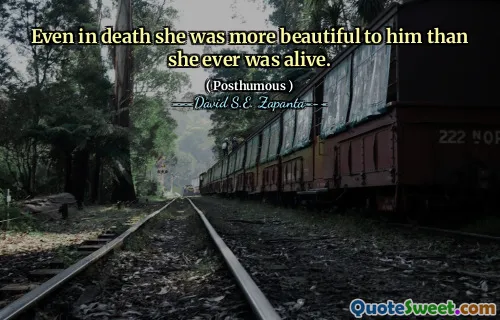He could swear he did not look back, could not-by any optical chance, or in any prism-have seen her physically as he walked away; and yet, with dreadful distinction, he retained forever a composite picture of her standing where he left her. The picture-which penetrated him, through an eye in the back of his head, through his vitreous spinal canal, and could never be lived down, never-consisted of a selection and blend of such random images and expressions of hers that had affected him with a pang of intolerable remorse at various moments in the past.
The protagonist experiences a profound internal conflict as he walks away from a significant person in his life. He believes he does not physically look back, yet he is haunted by a vivid mental image of her. This image is not merely a memory but a complex amalgamation of her expressions and moments that stirred feelings of regret in him before. The weight of these memories creates a sense of lasting emotional pain that he cannot escape.
This reflection highlights the power of memory and how it can be both a source of beauty and torment. The ability to remember someone so distinctly proves to be a curse, amplifying his remorse about their past interactions. The narrative emphasizes the struggle between moving forward and being tethered to the past, illustrating how memories can shape one's identity and emotional state indefinitely.





